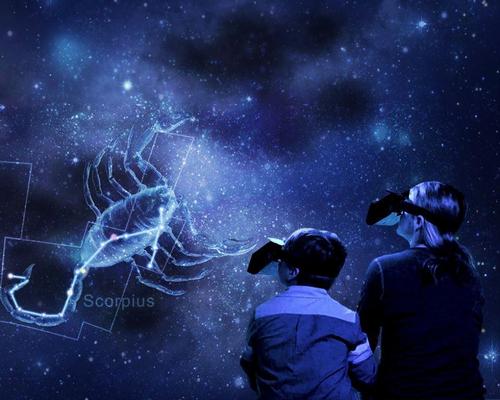22 Jun 2018
National Geographic uses augmented reality to create world's first open-air planetarium in Canada
BY Tom Anstey

National Geographic has teamed up with augmented reality provider Aryzon to create the world's first open-air planetarium, using AR to project images into the night sky for a unique stargazing experience.
Taking place at the Au Diable Vert Station Montagne in Quebec, Canada, "ObservEtoiles" debuts tomorrow (23 June) and will allow up to 180 visitors the chance to observe the night sky with a digital overlay showing the constellations and names of the stars and planets.
For the two-hour experience, guests will be seated 1,000ft (304m) above sea level in a mountain-side amphitheatre created especially for ObservEtoile. Equipped with heated seats, the space has been created by Arena Comfort Products and will be useable at any exterior temperature or in any weather conditions.
Using the Aryzon headset, which was developed in the Netherlands and uses mirrors to project 3D mixed reality images, visitors can observe a selection of 17th-century illustrations of the constellations overlaid over the real stars and planets, without obstructing viewers’ line of site. British company Escapist Games has developed the application, which runs on an Asus Zenfone 3 Zoom. Minus the smartphone, the headset can be kept by users after the show, where they can then use the app to explore the stars from home.
The outdoor show will feature a "star guide", who will narrate the experience with specially-created content from the "Night Sky Guy", Andrew Fazekas – a science writer, broadcaster, and lecturer who regularly contributes to National Geographic and Canada’s Weather Network TV channel, and acts as a consultant for the Canadian Space Agency.
Au Diable Vert has recently been certified as Quebec's second Dark Sky Reserve, acknowledging efforts to remove light pollution from the area at night. It becomes only the 14th such sight in the world, as designated by the International Dark Sky Association.
Close Window